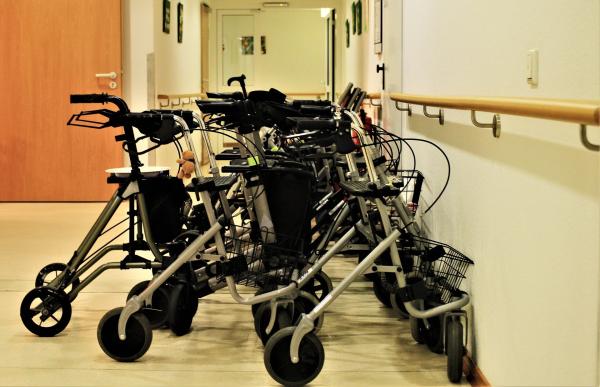While it is evident that nursing home residents [1] are both susceptible to COVID-19 and suffer higher rates of mortality, it has been unclear what exactly the underlying risk factors are. Certainly, co-morbid conditions, which seem to accumulate as we get older, are involved, as are the interactions with their more insular community of elderly, and care-givers, nurses, aides, dietary staff, and so on. A new study reported in JAMA, conducted between March and September of 2020 in a nursing home network of 351 facilities, looked at residents the 30-day outcome of ~5250 patients that were symptomatic with a positive COVID-19 PCR test. Median age 79, 61% women, 71% Caucasian, 17% Black.
Things we know
- 21% died within 30 days
- Mortality risk increased with increasing age
- Men died more frequently than women
- Contrary to other COVID-19 studies, THE risk of death was higher for Caucasians than FOR other ethnicities
- Diabetes and chronic kidney disease were the two strongest risk-factors for 30-day mortality
Novel Findings
I use the term novel guardedly. The following are not so much new findings, as perhaps overlooked or neglected. It should be no surprise that nursing home residents have higher rates of both cognitive and physical impairment, it is often the reason for their residence. I discussed the role of one of these risks, dementia, previously, so I am happy to see I was on the right track.
- Physical impairment increased the risk of death by 64%
- Cognitive impairment increased the risk of death by nearly 300%
The researchers point out that the “nursing home quality” did not account for the findings. This should be remembered in the “finger-pointing” that followed COVID-19’s initial wave and the reflexive attack on nursing home management rather than some more complex interaction. What is it about dementia and physical impairment that increase risk? Those diseases by themselves have few biological causes to explain that increased vulnerability.
Frailty is part of the answer, but all of these individuals are varying degrees of frailty; what is it that makes dementia or physical impairment worse? It seems that both of these conditions require outside assistance in the acts of daily living we take for granted, like getting dressed and eating a meal. The study suggests that a multiplicity of caregivers bring not just care, but may well asymptomatically bring, COVID-19 as well to these patients. Several prior studies have documented how nursing home staff, paid at rates requiring multiple jobs, may act as super-spreaders, ferrying COVID-19 from one facility to another. Lack of appropriate training and PPE further facilitate the spread.
The study does not explain cause; that last paragraph is an attempt to connect the dots. It does not consider asymptomatic or community-living elderly, and, because the pandemic continues, the data is subject to change over time and space (this dataset is primarily from the Northeast) Frailty is a better descriptor than chronologic age, but it seems within frailty we can identify factors with a stronger impact, specifically dementia and physical limitation.
We must recognize, in a way that should serve as a cautionary tale, that our attempts to protect our frail may in some cases further endanger them. Could we and should we do a better job in training and protecting healthcare workers in these facilities? Of course. But we might also consider raising their wages so that a 40-hour week pays the bills and doesn’t require a second or third job. We might also consider making COVID-19 immunization mandatory.
Nursing homes and vaccine hesitancy
There is remarkably little information available at the moment about which healthcare workers are rejecting vaccination. The number we see in the news is 30-40%. If we use seasonal flu vaccination as a possible model, we can begin to identify the hesitant/resistant. Among healthcare personnel described by role, the lowest vaccination rates for seasonal flu was among nursing assistants and aides at 72% and non-clinical personnel at 75% (Physicians were at 96%.) When stratified by place of work, long-term care facilities were the worst at 69%; hospitals, by comparison, were at 93%. My colleague, Dr. Berezow, has been quite adamant about vaccinating these individuals, and he makes a good point. Mandatory vaccination increases vaccination rates in long-term care facilities, from 69% to 88%.
When you couple that data with this study of nursing home deaths, you see that vaccination for healthcare workers is not simply a “my body, my choice” decision. Healthcare workers have a professional and social obligation to be vaccinated.
[1] Nursing home residents include those in long-term care living independently, with partial or complete assistance – a varied group, but all elderly.
Source: Risk factors Associated with All-Cause 30-Day Mortality in Nursing Home Residents from COVID-19 JAMA Internal Medicine DOI:10.1001/jsmsinternmed.2020.7968




